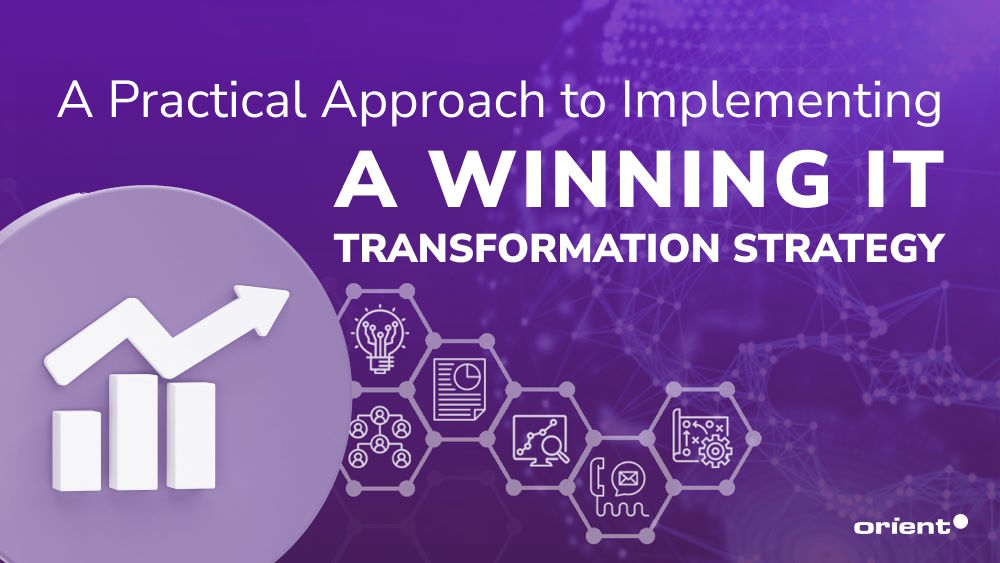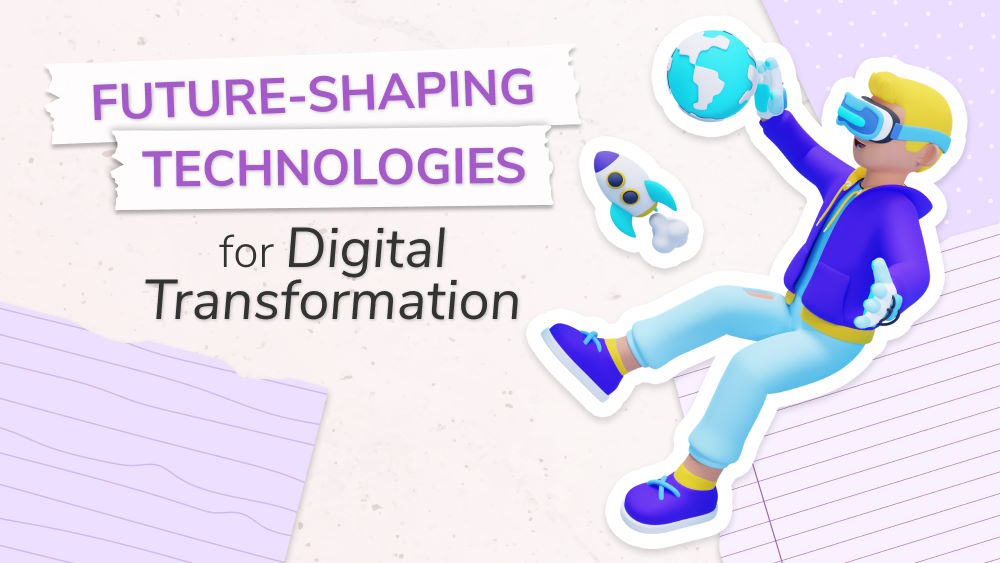
Embracing Digital Transformation in Banking: Should or Should Not?
If you are looking for the answer to whether you should adopt digital transformation in banking or not, you have come to the right place.


As AI has steadily been gaining traction, businesses, more than ever, have become aware of the digital transformation wave sweeping across all areas of life. Almost every large organization introduces an AI tool with the promise to enhance productivity and make everyone’s life easier.
The revolution of AI is revealing a bigger picture. Businesses have to embrace technology if they want to stay relevant and competitive. Even though almost every business is aware that implementing digital technologies brings together business processes, people, and technology while also delivering value and driving innovation, only 1 in 3 digital transformation efforts are successful. This number highlights the complexity of the IT transformation journey. Nearly three-quarters of IT leaders now think their organizations prioritize digital transformation, but smart and strategic decisions are a must to achieve digital transformation initiatives.
If you are looking for a successful digital transformation strategy, this article is for you. The article outlines actionable steps and ways to measure your IT transformation efforts.
Key Takeaways

Before we jump into the detailed definition of IT transformation, it is important to discuss the nuances between IT transformation and digital transformation. Though the two phrases are often used interchangeably, their meanings are slightly different.
Both IT transformation and digital transformation involve changes in the IT department. However, while IT transformation focuses on changes in the organization’s IT services and IT functions, digital transformation is about changes in the business use of IT in its business process, culture, people, and/or its services and products. All in all, digital transformation is a broader term. Digital transformation efforts often trigger IT transformation, but IT transformation is possible without digital transformation.
Despite the phrases’ nuances, our article will use the two terms interchangeably. Digital transformation, in today’s article context, focuses more on the technical aspects of a business.
IT transformation is more than technological updates. It is the strategic process of modernizing an organization’s hardware, software, systems, and practices to meet current challenges and future demands, ensuring the sustained competitiveness of a business in an ever-changing market. In other words, IT transformation starts with business strategy. It involves intelligent investments in computing, storage, and network infrastructure to achieve an optimal balance between cost, performance, and efficiency while maintaining scalability.
The goal of IT transformation is to provide teams with space and the right tools to thrive and remain competitive. From there, deliver strategic initiatives faster.
Multiple factors drive IT transformation. It is no standalone event but rather a combination of factors like new business models that utilize new generation technologies, modern IT infrastructure with evolving technology like IoT or cloud-native application development, and the prioritization of better, more personalized user experience. In addition, data has become the new oil. Businesses have embraced data-driven processes by leveraging numerous technology tools. The need to strengthen integration with external stakeholders through API platforms to enhance products/services and delivery channels is a crucial factor, too.
No two digital transformation strategies are the same. However, the benefits brought by a successful IT transformation strategy are arguably universal. The benefits listed below can double as key performance indicators (KPIs) to measure the strategy’s success.
A successful IT transformation strategy can reduce the time to market for your products or services, streamline IT operations, and encourage innovation without compromising productivity. This can ultimately lead to business growth and help stay competitive.
An intelligent organization of IT policies and workload distribution across the network can make it easy to manage and operate your IT infrastructure. This can increase efficiency, reduce operational costs, and uplift the overall performance of your IT systems.
Legacy IT infrastructure can pose several difficulties, including data silos, technical debt, service gaps, bottlenecks, and endpoint device manageability issues. A successful IT transformation strategy can overcome these challenges and enable you to leverage modern IT technologies to stay ahead in the game.
Effective IT cost management techniques enable economies of scale with minimal operating expenses and a quick return on investment. This reduces costs and improves the overall financial performance of your organization.
Protecting your endpoint devices from cyber threats is critical in today’s digital age. A successful IT transformation strategy identifies possible risks, mitigates damage, and streamlines patch management to ensure the security and stability of your IT infrastructure.
Digital transformation success is the result of strong teamwork. Having all departments on board and on the same page is essential for the best business outcomes. Ideally, here are the most involved parties in the digital transformation journey.
Multiple factors go into developing a digital transformation technology, e.g., emerging technologies (think of AI and its recent disruption), business models, business values, etc. Despite numerous factors to consider when you build a digital strategy, there are universal steps to take to build a successful digital transformation plan.
This step lays out the foundation for your entire digital transformation journey by assessing your strengths and weaknesses and areas of improvement. This step can be broken down into four smaller steps.
First, you need to conduct a comprehensive assessment of the existing infrastructure, processes, and applications. This means a close review of the following:
Then, work out the possible bottlenecks or areas that might need more attention.
After the initial review, make sure that you and your team thoroughly understand the digital technology in use and the interdependencies. This step is crucial for removing redundancies and outdated software.
To make sure that the technology stack is aligned with the organization’s current and future needs, take a close look at performance, security gaps, and scalability.
Think ahead of the KPIs that help you gain insight into the effectiveness of the new digital business model. For example, response time, system uptime, incident resolution rate, and customer satisfaction score are helpful indicators. Remember to zoom out and track the entire process to have a clear idea of whether the transformation efforts are meeting the expected outcomes.
Take note of the existing strengths and weaknesses. For the strong points, e.g., robust security measures, think of ways to better leverage them to your advantage. Address weaknesses like inefficient legacy systems or workflows to work out ways to move steadily towards the digital transformation goal.
After an extensive review of the areas that need improvement, it is time to prioritize areas of improvement.
It is time to put the collected information and insights into an actionable roadmap.
The ability to utilize new-age technology like cloud computing, AI and ML, and big data all help push your business forward rapidly. Here is a quick overview of what these technologies can do for you during your digital transformation journey.
Cloud service migrations, such as IaaS, PaaS, and SaaS, can lower capital costs, make maintenance easier, and increase accessibility. Businesses also have the freedom to opt for public, private, hybrid, or multi-cloud models. No matter what model is chosen, cloud computing provides cost-effectiveness, scalability, and flexibility. In addition, cloud-native applications and microservices architectures enhance service delivery efficiency.
It is evident that AI and ML have revolutionized IT operations, such as automation in customer response with chatbots, data analysis, and machine learning algorithms to support decision-making, predictive maintenance to save costs on unexpected crashes, and so on.
Big data allows automated, integrated real-time data streaming with advanced data analytics to collect data and find new insights to transform complex data into actionable insights.
Cybersecurity should always be at the forefront of any IT operation. There are many ways to implement robust security measures, including data encryption, access control, constant employee awareness training, regular software updates, and more to cover network security.
Another factor that can help your business stay on the right track of digital transformation is metrics to evaluate the outcome.
In the dynamic landscape of digital technology, businesses must constantly evolve to stay competitive. Digital transformation is not simply a buzzword but a strategic imperative for those organizations seeking to thrive in the digital age.
As organizations rarely go through this process alone without the help of an expert partner, Orient Software is ready to help you with your transition journey. No tasks are too daunting for us, as we have a team of seasoned professionals on board who have assisted in multiple digital transformations in the past. Contact us today to learn more!
If you are looking for the answer to whether you should adopt digital transformation in banking or not, you have come to the right place.
Digital transformation in healthcare aims to improve patient outcomes and practice productivity. Learn to leverage the latest technology in your practice.
Unleash your business's potential with digital product consulting. Discover the value of digital product consulting for growth and success.
Don't dive headfirst into digital transformation, no matter how tempted you are. Establish a solid digital transformation framework first.
The time has come for your company to advance by embracing digital transformation technologies. Let's discover the upcoming technologies to get digitalized.



